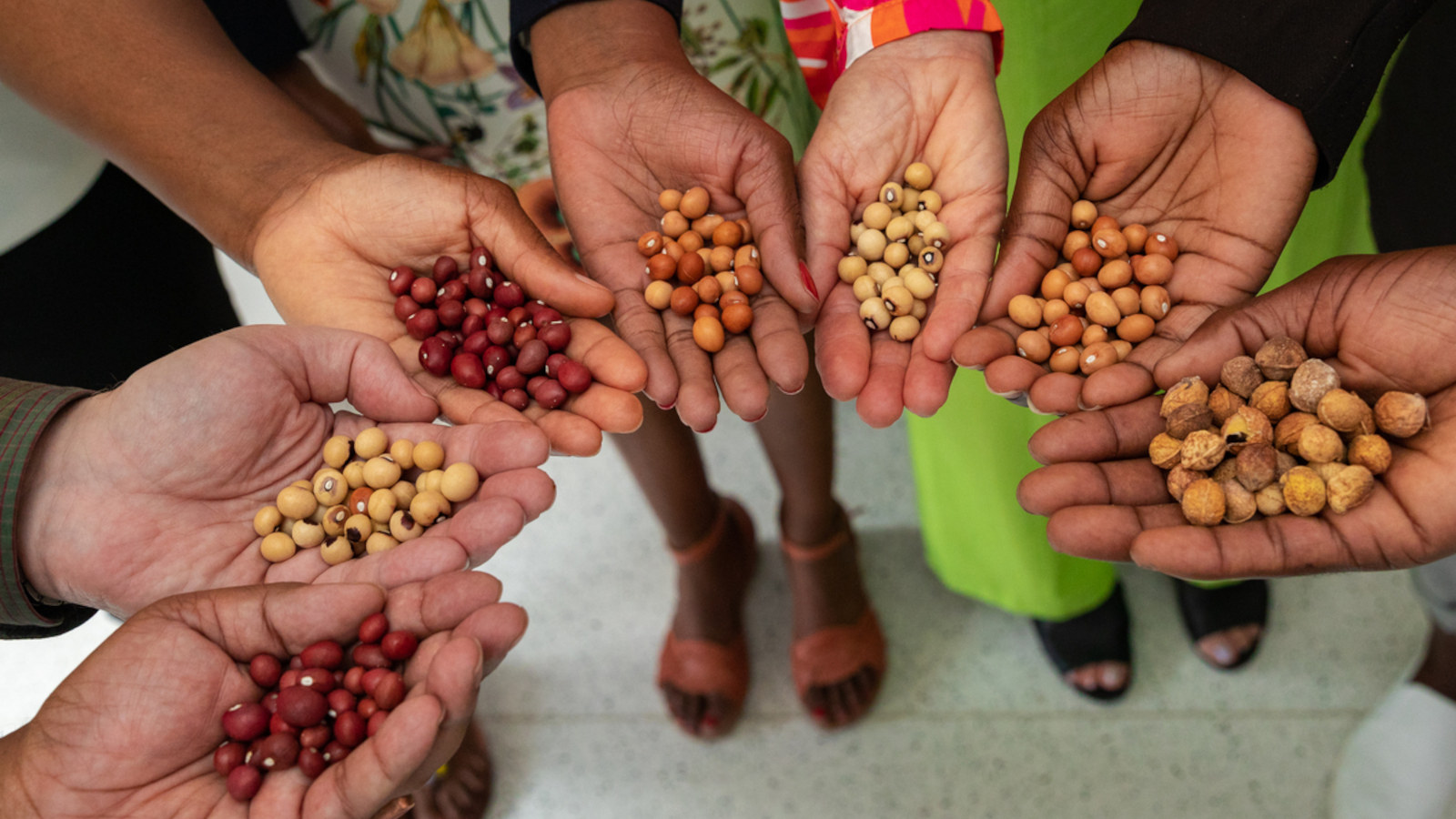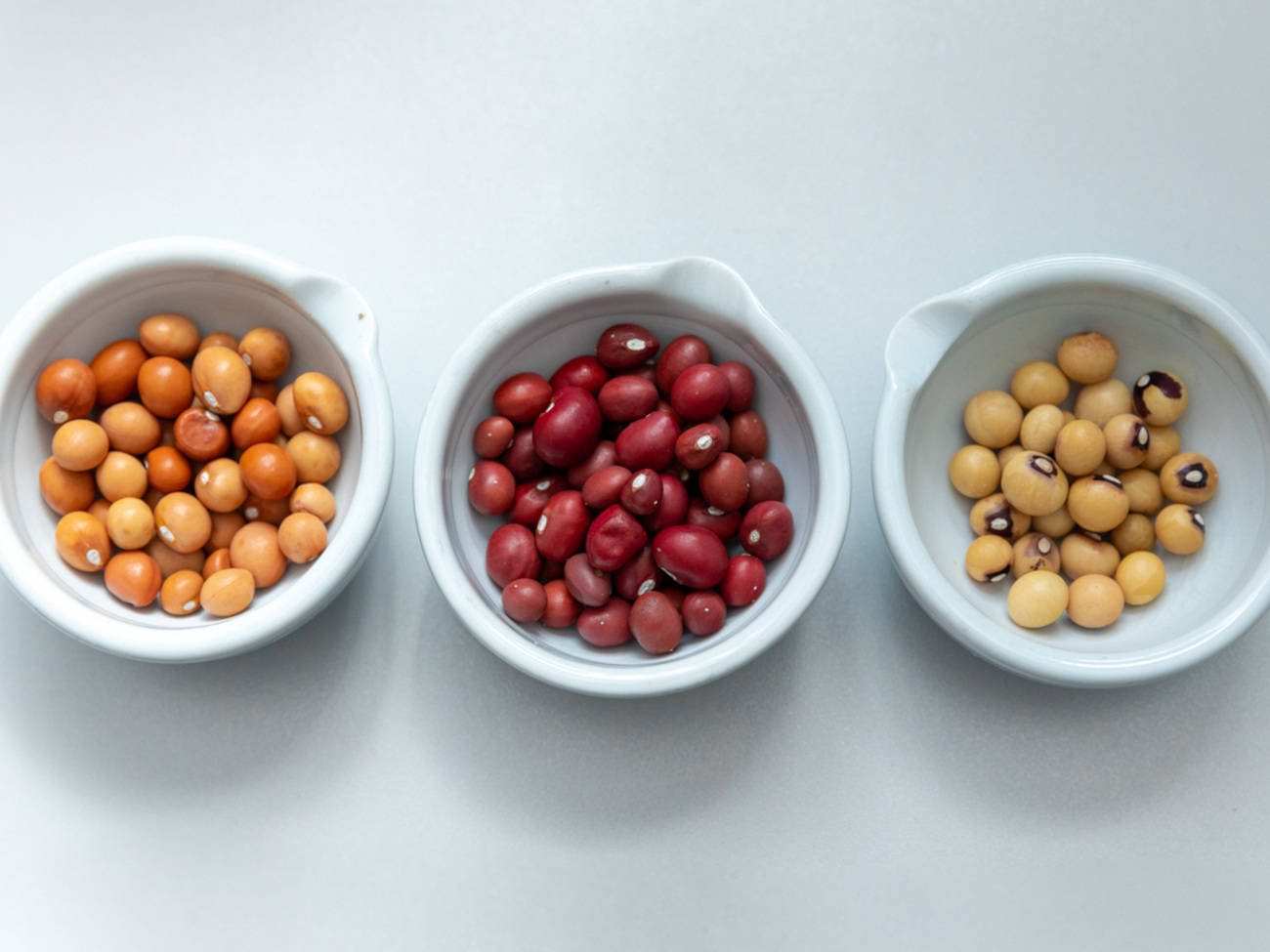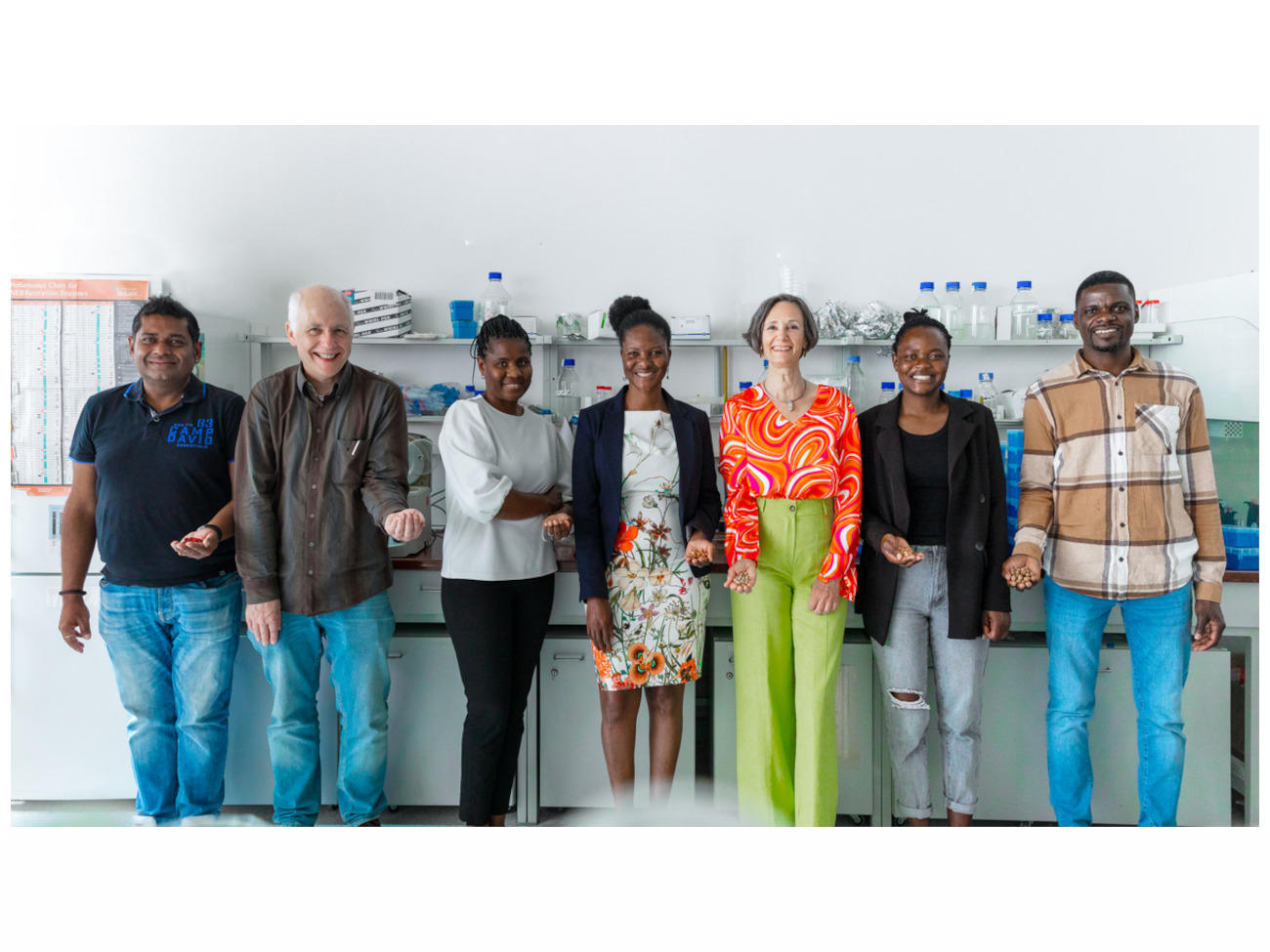
© Matej Meza / Universität Bremen
Scrumptious Research
Biologist Barbara Reinhold-Hurek and fellow Namibian researchers improve the cultivation of legumes
23 percent. This is the number of children suffering from malnutrition in northern Namibia. Especially protein deficiency is high. The Bambara groundnut – also called earth pea – could provide relief. Smallholders in the area already grow it, but often with low yields. Together with local partners, the University of Bremen is working to improve the sustainable cultivation of the legume in the region through adapted bacteria. They hope to turn the earth pea into an innovative product for the domestic and international market.
Ms. Reinhold, what does the Bambara groundnut taste like?
Fantastic! It is an extremely flavorsome bean with an aroma reminiscent of beans and peas familiar to us. At the same time, it has a nuttiness, something between peanut and bean, which I really like.
In Europe, the earth pea is probably relatively unknown. Why is that?
It is a purely African crop; a typical smallholder product far from large marketing chains. At least not in Namibia. Even in the capital Windhoek it is not very common and widespread.
What is special about this legume?
The earth pea is a domestic plant that is quite drought tolerant and grows well in nutrient poor soils. It has a fantastic nutritional profile. It is high in fiber, has a very good amino acid composition, and is high in protein. So, it is a holistic food.

© Matej Meza / Universität Bremen
What exactly is the goal of the SusTec research project?
Our project aims to improve the sustainable domestic cultivation of the Bambara groundnut through adapted symbiotic bacteria. This is pioneering work: Although the yield of soybeans has been improved with bacteria for decades and thus does not require nitrogen fertilizer, this type of biofertilizer has not been used in Namibia yet.
Ultimately, we want to transform this understudied and underdeveloped crop into innovative products – both for the domestic market and for potential export products, such as a meat substitute crop for vegetarian and vegan cuisine.
What would such an improvement mean for locals?
More income! Less hunger, better nutrition, and more income. Quite simply, the improvement of living conditions. Subsistence agriculture could turn into subsistence production, which would generate jobs. We plan to analyze and improve the entire cycle: from safe and efficient production on smallholder farms to the formulation of healthy, innovative protein-rich foods to sales and marketing. In particular, we aim to combat child malnutrition by developing a resilient local value chain for one of our planned products – a high-protein porridge.

© Matej Meza / Universität Bremen
How did the project come about? And how important is the cooperation with the Namibian researchers?
It is important to ask local people for their wishes and ideas. The project developed from many discussions with stakeholders such as smallholders and researchers. We also rely on local support for the implementation: We need trial fields in areas where farmers actually work. After all, there is no point in doing it in Windhoek, if 800 kilometers north of it the soil and climate are quite different.
By relating directly to the community, we also hope to provide an important research transfer. It is important that we share the knowledge of our research. For example, it makes no sense for us to prepare the bacteria here in Bremen for decades to come and then send them by express to Namibia. That needs to be perpetuated there.
All in all, we don’t want to impose our ideas on others, but rather develop the project together on site, at eye level. To this end, our international team of microbiologists, plant breeders, food and nutrition specialists at the University of Bremen, the Bremerhaven Technology Transfer Centre, the University of Namibia, and the Namibia University of Science and Technology are working together.
Are there already concrete results?
Usually farmers use beans that they obtained at some point and that they propagate themselves, but they are not actual varieties. These fruits produce completely different yields from year to year. Our partner in Namibia, Professor Lydia Horn, who is a plant breeder herself, has created three different main types of earth pea varieties and had them tested by smallholders. For these three varieties, we would now like to generate the appropriate cultivation methods with the appropriate bacteria. The first tests show that we need different bacteria in order to create the perfect symbiosis. This is a first interim result.
Subsequently, farmers will be able to choose which they want to plant, which to sell, and which they want to eat themselves. We have already had a first season with field experiments where we have seen positive results of our bacteria on the crop. We now need to repeat and enhance it further. But it looks promising.